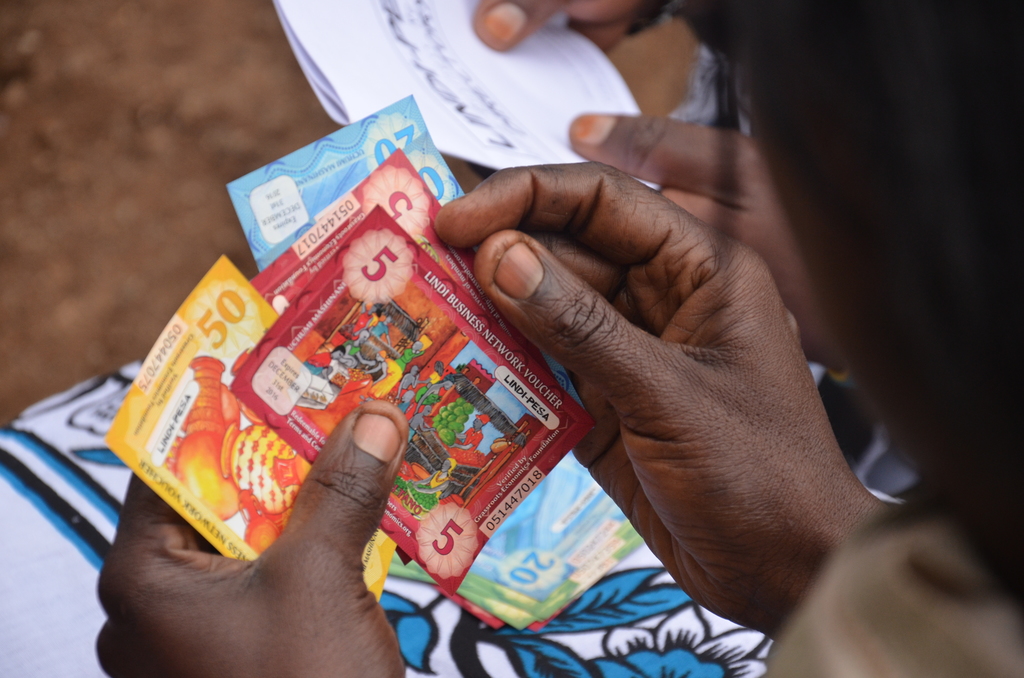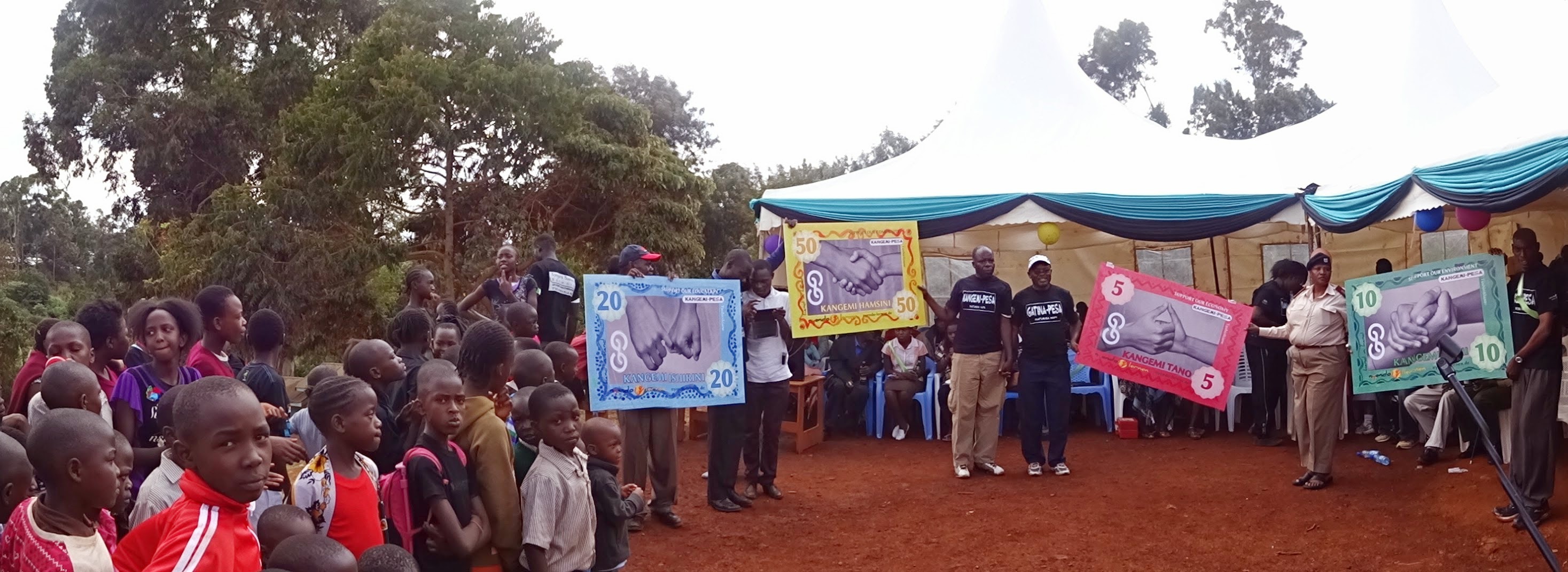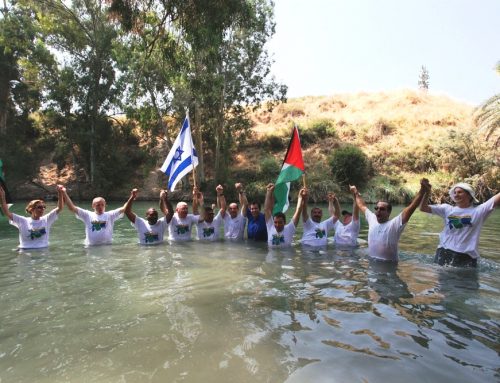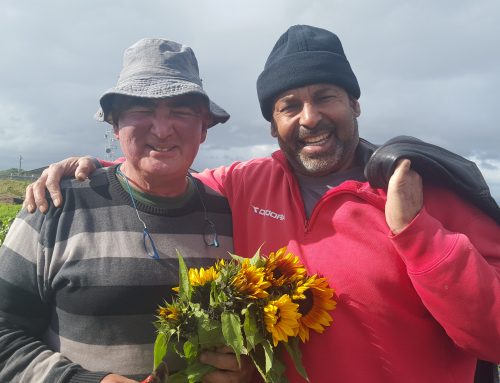Money is a powerful force in complex societies. It represents access to food, security, and health. In some cases it represents freedom itself. Money is credit, and in the case of national currencies, a piece of money (whether it be a dollar, a rupee, or a yuan) represents an IOU from the government. Money’s ultimate power lies in our collective faith in its value. The movement of money allows products and services to flow within society.
However, in poor communities, such as the Kongowea slum outside of Mombasa, Kenya, the economic conditions can result in a scarcity of money, which strands products and services. Members of the community may have the capacity to meet various needs within the community, but a lack of money prevents exchanges from happening.

Hair salon in Kenya accepting community currency, Bangla-Pesa
To solve this problem, organizations, such as Grassroots Economics, develop ‘community currencies’. Community currency, also known as complementary currency, refers to locally-based means of exchange outside of, or parallel to, the national currency system. Instead of being backed by banks or the government, community currencies are backed by local players, resulting in liquidity based on a community’s assets –that is, it allows communities to issue their own credit.

Lindi-Pesa used in the Kibera Slum outside of Nairobi, Kenya
There are many benefits to complementary currency. The ones designed by Grassroots Economics allow community groups to have access to interest-free credit, which allows individuals to finance social services for the benefit of all, such as environmental, health-related, or education services. These currencies also increase the economic stability of a community through increased local employment, development, and trade.
Grassroots Economics has established multiple different community currency systems in Kenya. The organizations original currency project was the creation of the Eco-Pesa in the Kongowea slum outside of Mombasa. Also in Mombasa County, the organization helped to create the Bangla-Pesa and the Ng’ombeni-Pesa. Around Nairobi, the organization worked with communities to establish the Gatina-Pesa, the Kangemi-Pesa, and the Lindi-Pesa –the last of which is located in Kibera –the largest urban slum in Africa.

Launch party for the Gatina-Pesa in 2014
The use of community currencies and the local economic networks they create can help develop and sustain local cooperative businesses that remove the need for certain imported goods. According to Grassroots Economics, if the system is working, communities that have adopted complementary currencies are able to bolster local economic developments such as supermarkets; flour mills for the processing of maize; oil presses for cold-pressing coconuts and other seeds; community farms and gardens; local transport; local health clinics; nurseries and childcare; and the investment into collective natural resources such as grazing lands, water reserves, and forests. Increased self-reliance can decrease the vulnerability of communities to external shocks and pressures.

Map of the Bangla Business Network created during community brainstorming sessions in 2013
Halting and reversing the cycle of poverty is no easy task; however, alternative monetary systems represent a potential way to put capacity into the hands of marginalized people. Complementary currency is a move towards more democratic and decentralized monetary and economic systems. Sustainable and just environmental and social development can only happen when communities are economically secure and empowered.
Grassroots Economics asks what and who money is for. Money is a tool and our monetary systems can be reimagined and changed to better suit our goals and values. Change money, they say, change the world.
All photos provided by Grassroots Economics



